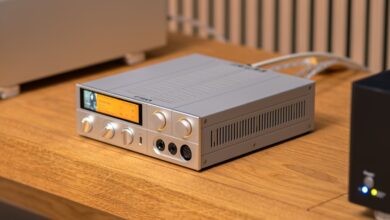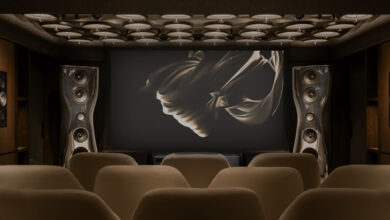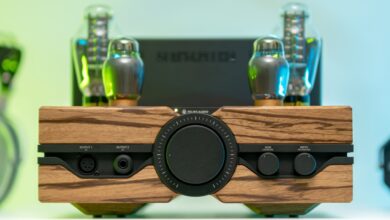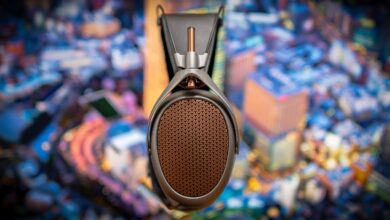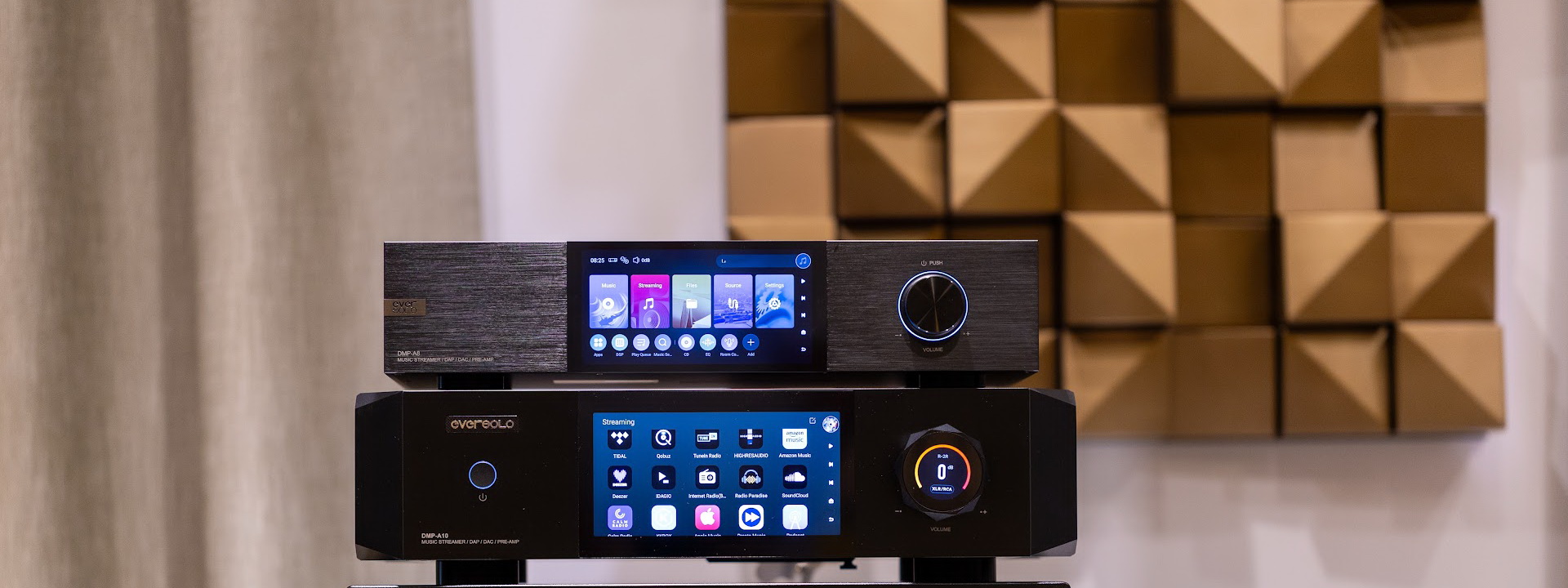
There are moments in this hobby when curiosity turns into obsession. For us, it was one morning overlooking a beautiful sunrise during spring break when children were playing outside their grandparents’ house. In that quiet moment, a question popped: “How far apart in sound quality are the Eversolo streamers throughout their lineup?” You would think the internet, overflowing with reviews, would give us a clear answer. Yet, after digging and searching, all we found were pages and reviews filled with specs, app screenshots, and long lists of features, or the sound quality of an individual unit, but never comparing them side by side. Useful, yes, but never about what we cared most about: how they compare in sound quality when the music starts playing.
That silence spoke louder than any marketing brochure. So we decided to do what we could not find anywhere else: a direct, honest, head-to-head comparison of the Eversolo lineup, judged purely on sound quality. No distractions. No shortcuts. No technicalities. Just music. Plug and Play.
While writing about this comparison, after a few days had passed, during one of our listening sessions, we felt we needed to add some spice into the mix …what would a real-world budget-friendly spice look like? Why of course it’s the completely budget-friendly Wiim Ultra!
So…how did the Eversolo A Series streamers measure up? We ran all five models through the same system to ensure identical conditions and repeatable results:
• Hegel H400 amplifier
• Monitor Audio Gold 300 G6 speakers
• Roboli Charlin Stars cabling
Every time before testing would begin, we would run each streamer to warm up, before critical listening, and we made sure the system settled between switches, with repeated listening sessions on different days and times, both solo and in groups, using familiar and unfamiliar tracks, sourced from Tidal Hi-Fi.
These are the prices at the time of testing:
• Eversolo A6 – 4.199 RON ( ~ 830 €)
• Eversolo A6 Master – 6.499 RON ( ~ 1.299 €)
• Eversolo A8 – 9.999 RON ( ~ 1.999 €)
• Eversolo A10 – 18.899 RON ( ~ 3.699 €)
Let’s take a short look inside first, see what we’re dealing with, and understand the building blocks of each device before moving on to the listening experience and our impressions.
Part 1 – Interface, Engineering, and Tech
We’ll begin with the Eversolo DMP-A6
Build & Design:
The DMP-A6 features an all-aluminum chassis with a thick glass front panel and a pretty large touchscreen. The rear panel includes balanced XLR and RCA outputs, coaxial and optical digital outs, USB, LAN, and a full-size SD card slot. All connectors are robust to the touch, and the device is physically substantial, reflecting its focus on durability and high-quality construction.
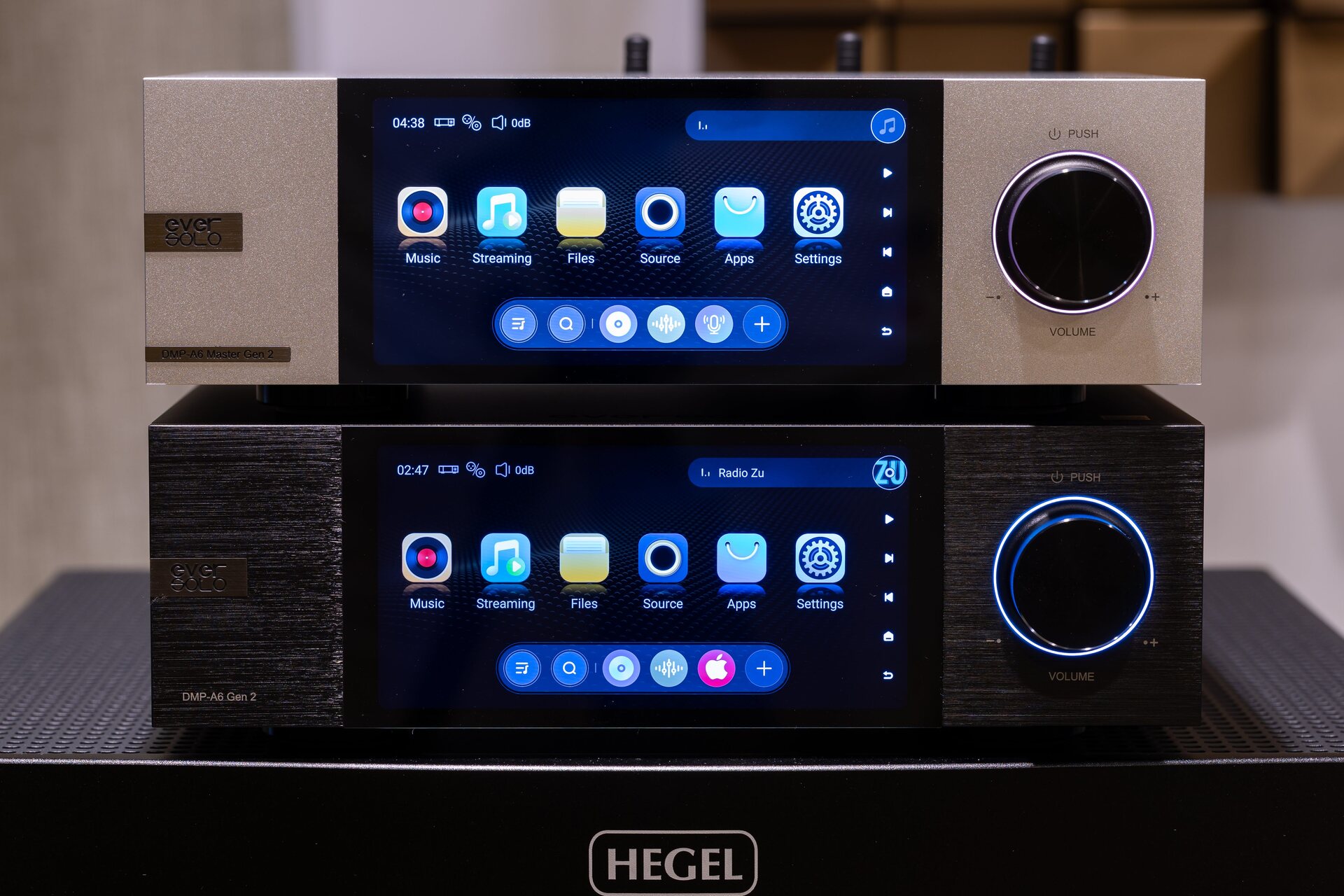
Here you can see the DMP-A6 in black on the bottom of the stack
Software & Interface:
Eversolo’s proprietary OS is visually rich, highly customizable, and quick to respond. The interface allows users to browse music, build playlists, and adjust a full-featured parametric EQ, all from the front panel. It supports streaming services, local files, and network playback with gapless support, hi-res file compatibility, and regular firmware updates. At no point during testing did we find the OS lagging or non-responsive. We liked this and took it as a statement of quality and dedication to a good end-user experience.
Internal Engineering & Specs:
- Dual ESS 9038Q2M DAC chips (balanced configuration, one per channel)
- Two high-precision crystal oscillators
- Analog outputs driven by OPA1642 SoundPlus op-amps
- Powered by a toroidal transformer with separated regulation for digital, analog, and display circuits
- Supports PCM up to 768kHz and native DSD512 via USB
The next device is an evolution of the DMP-A6: The Master Edition
Regarding build and design, the Master Edition retains retains the A6’s chassis but adds improved internal damping and upgraded isolation feet. Branding is also subtly elevated to let everyone know, they are dealing with the Master Edition.
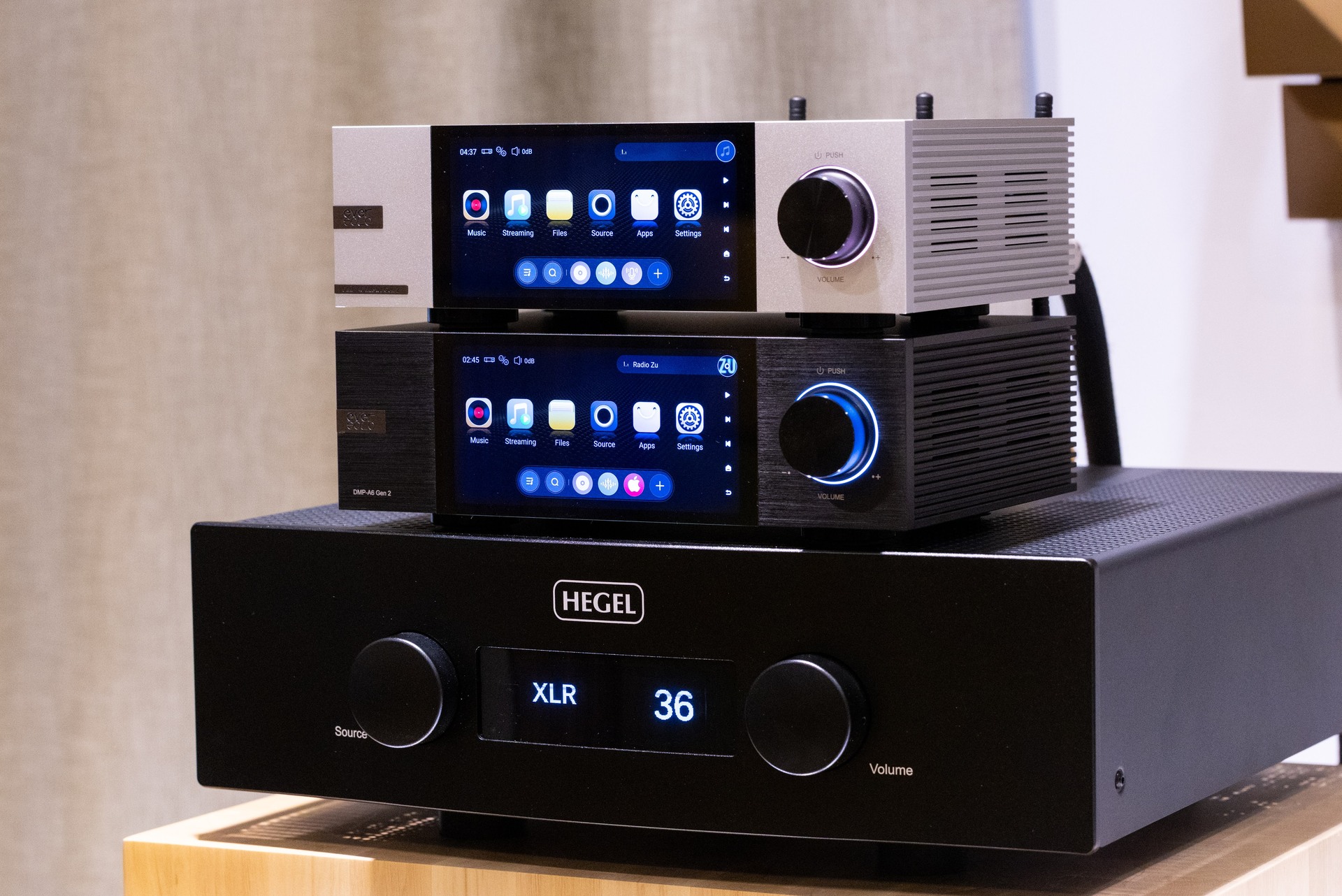
You can see the Master Edition on top of the stack finished in silver
The software experience is identical to the standard A6, with fast navigation, deep customization, and stable operation. The Master Edition, as is the case with all the versions of the tested Eversolo streamers, benefits from the same regular firmware updates and streaming compatibility.
Internal Engineering & Specs:
- Dual ESS 9038Q2M DAC chips (fully balanced, one per channel)
- UPGRADED Dual femtosecond Accusilicon clocks with ultra-low phase noise and jitter, significantly higher precision than the standard crystal oscillators
- UPGRADED Premium OPA1612 op-amp array in the analog stage (lower noise density: 1.1 nV/√Hz; ultra-low distortion: 0.000015% at 1 kHz)
- UPGRADED Low-noise switching power supply enhanced with a choke filter and audio-grade capacitors for cleaner power delivery
- Support for HDMI DSD multichannel via DOH chips
- Internal M.2 SSD storage (up to 4 TB), Bluetooth 5.0, Wi-Fi, and Roon readiness
We see many improvements made to an already good foundation.
Next up is the Eversolo DMP-A8:
It uses a heavier, fully aluminum chassis with improved internal shielding, a larger display, and upgraded isolation feet. We are no longer looking at a slim, compact design but at a real device that looks and plays the part.
The rear panel includes everything one might expect: balanced XLR and RCA, HDMI, I2S, dual USB, LAN, optical, and coaxial connections. Build quality is reference-grade; we could not find any fault, try as we might!
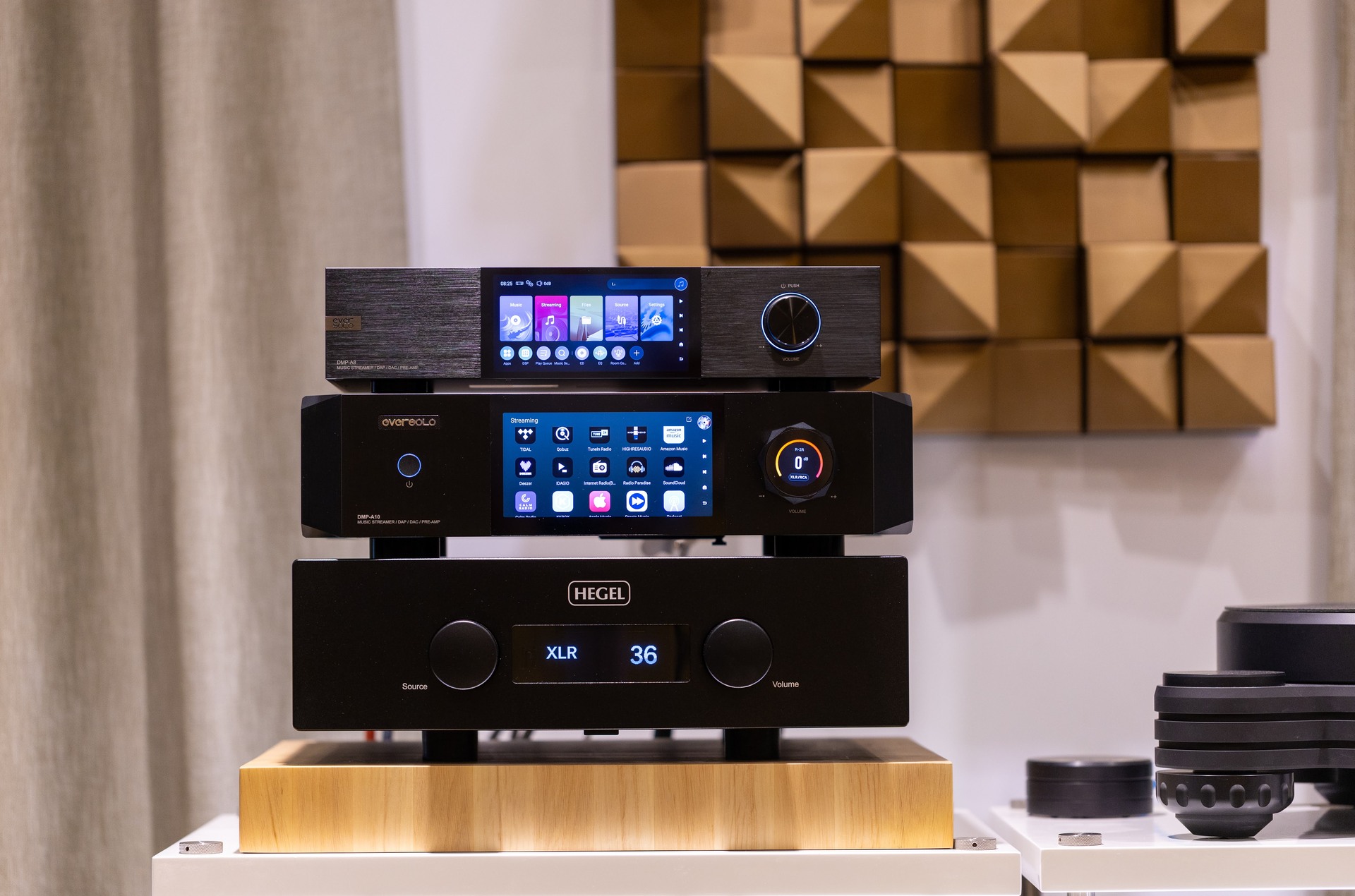
The Eversolo A8 peacefully lying on top of the stack
The software interface supports MQA decoding, Roon Ready certification, DSD native playback, and fast switching between sources. Users can browse and manage all functions from the touchscreen, with responsive album art, instant file access, and no lag. We had no issue using the touchscreen; everything worked flawlessly.
Internal Engineering & Specs:
- DAC: AKM AK4191EQ digital section + AK4499EX analog converter
- Audio processor: Gen 3 XMOS XU316
- Dual femtosecond clocks (45.1584 MHz & 49.152 MHz)
- Volume control uses a fully balanced R-2R resistor network with relays, ensuring low noise and true high-fidelity levels
- Power supply: Dual design with low-noise linear supply for analog and an optimized switching supply for the digital side, reducing interference
And last but not least: The Eversolo DMP-A10
It stands at the top of the company’s lineup, with a massive machined aluminum chassis, a large touchscreen, and a milled aluminum remote. The rear panel includes balanced XLR, RCA, dual I2S, twin USB, clock input/output, and automation triggers. Physical presence and construction quality are on par with reference-class sources.
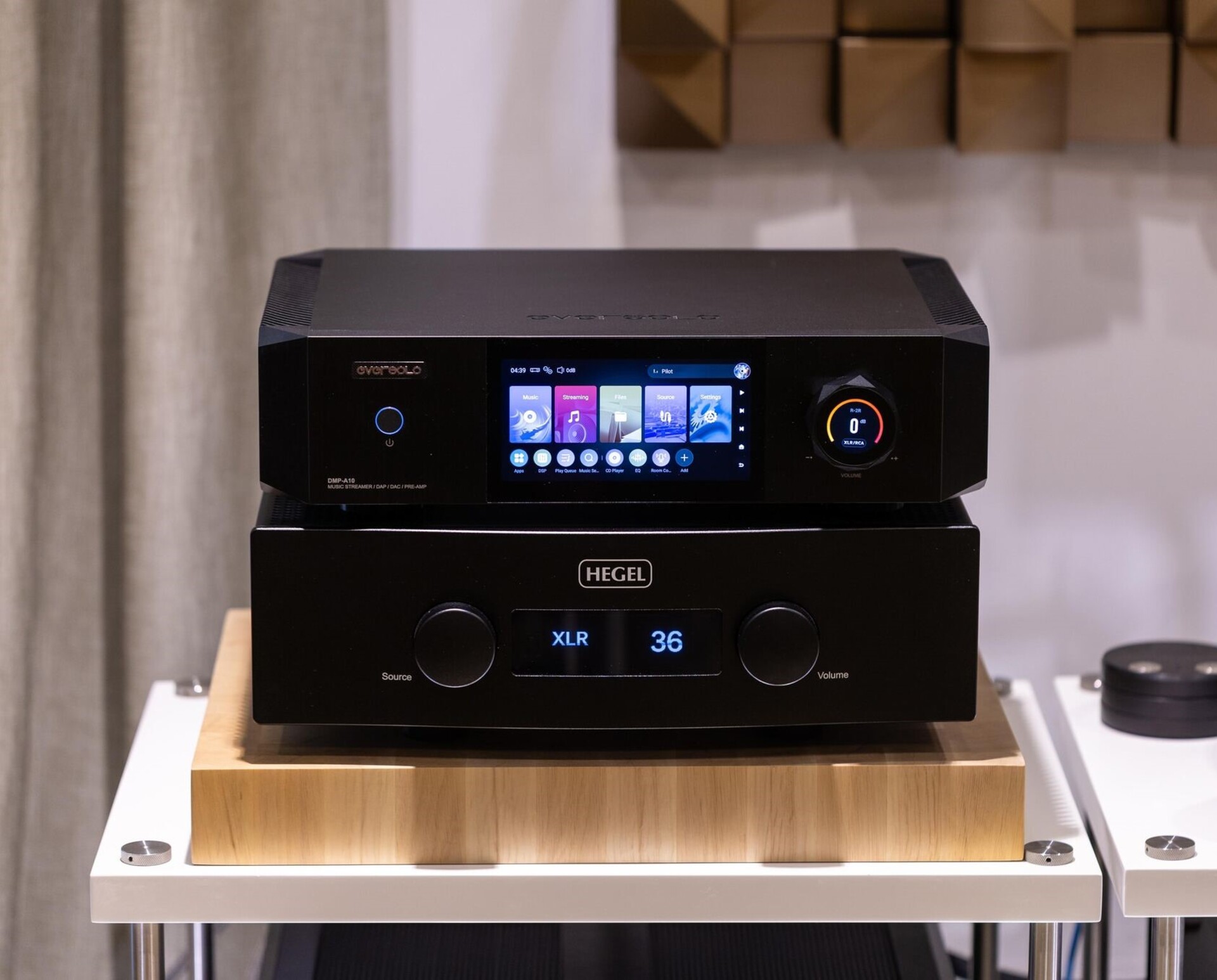
The OS is the most advanced in the range, offering custom digital filters, real-time spectrum analyzers, exclusive USB/Ethernet streaming modes, programmable output levels, and comprehensive user control. Roon, HQPlayer, Tidal Connect, and other advanced streaming protocols are fully supported.
Internal Engineering & Specs:
- DAC: ES9039 Pro with EOS (Eversolo Original Sampling rate) audio engine for bit-perfect playback
- Power: Dual linear power supplies with ultra-low noise (<30 µVrms ripple) and intelligent switching for global voltage compatibility
- Clocking: High-precision OCXO
- Preamp section: Fully balanced analog preamplifier with R-2R volume control, +10 dB analog gain, ultra-low noise, and distortion
- DDC support and analog-to-SPDIF ADC paths for routing signals and EQ adjustment
- I/O & Storage: Dual M.2 NVMe SSD slots (up to 4 TB each), SFP fiber input, and IR/Bluetooth remote control included
As for the spice, we think the Wiim Ultra is considered by many as a budget-friendly king for a streamer. It is compact, lightweight, and solidly built for its price. The enclosure is plasticky but well-made, the touchscreen is as responsive as one could ask for in this price range, and the front-panel controls are reliable and easy to use. The rear panel includes USB, optical, coaxial, and analog outputs, with each connector mounted firmly without any unwanted play. Its small footprint makes it easy to place in any system and even helps it blend in, if the user wants it to be somewhat hidden.
The Wiim Ultra runs a stable, fast OS and companion app. Setup is quick, with support for all major platforms: Spotify, Tidal, Qobuz, AirPlay 2, and DLNA.
Internal Engineering & Specs:
- Texas Instruments PCM5121 DAC chip, supporting PCM up to 384kHz/32bit
- All processing and conversion stages are integrated on a single board
- Compact switch-mode power supply
- Single-ended analog output
- Component selection focused on efficiency and stability for this price level, resulting in a low-noise floor and consistent performance
Let’s quickly review the qualities of the Wiim Ultra that we’ve discovered during our testing. We found its ease-of-use features, like the responsive touchscreen, an intuitive app, and seamless setup to be its main strengths. It was easy to love: plug it in, open the app, and enjoy music instantly. The interface is clean, with logical menu structures, clear artwork display, and virtually no learning curve, making it accessible to everyone, even non-technical users.
Functionality is definitely robust for its price: the Wiim Ultra supports all major streaming services out of the box (Spotify, Tidal, Qobuz, AirPlay 2, DLNA), and multi-room audio also works reliably with almost no configuration.
Physically, its compact size, solid construction, and modern design allow it to fit unobtrusively in any system or space, from audiophile setups to desktop environments. The rear panel connections are secure, and the build quality is genuinely impressive for a device at this price point.
Regarding the sound quality aspect, we noticed it had a somewhat flattened soundstage, lacking in layering, dynamics, and 3D depth. We wanted to hear more depth and texture in the bass department. We also heard a midrange coloration or boxiness around ~400 Hz, making the voice a bit nasal, giving it a recognizable sonic fingerprint, no matter the track playing.
Let’s now embark on the journey upward through the Eversolo family, starting with the A6, stepping into the refined A6 Master Edition, then ascending to the A8, and finally reaching the summit with the A10.
Eversolo DMP A6 Gen 2
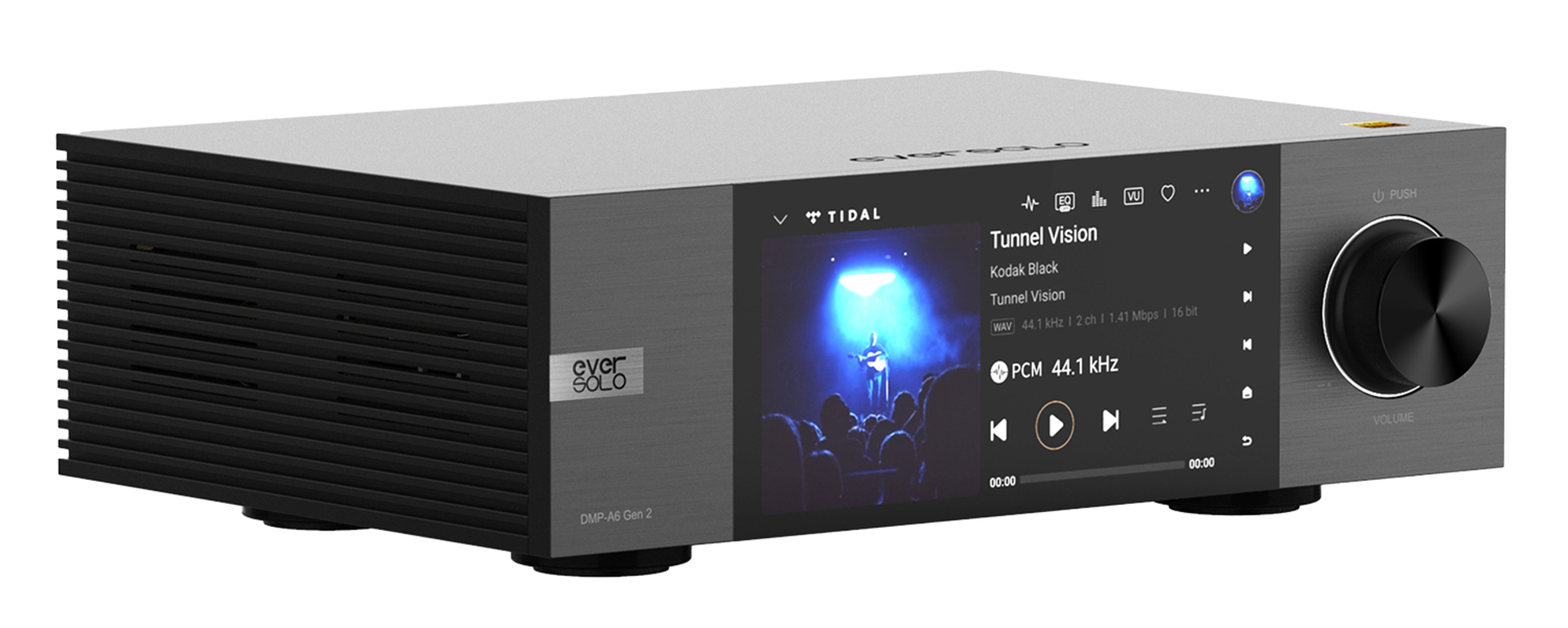
Bass:
Where the Wiim Ultra lacked extension, the A6 fully delivered. We found it to be a lot more impactful. We started hearing more layers and details. Dynamic capacity had also improved a lot, and we found ourselves a lot more engaged with lively tracks that demanded a bit of punch. Complex bass passages in electronic or jazz music were presented with much more weight, and the whole foundation of the music felt more substantial and physical. We’ve started hearing rumble where there was none, we’ve started feeling chest thumps where there previously were none. We expected an improvement, but we were left amazed by the extent of it!
Midrange:
The A6 avoided the Wiim’s boxiness coloration entirely. We found vocals to sound a lot more natural, more airy, and with much better dynamics. The timbre was now correctly reproduced, and we clearly saw how this was a totally different beast compared to the Wiim Ultra. Voices were placed more realistically within the soundstage, and acoustic instruments started to reveal their textures, with details we never realized were missing before. Music started to be more comprehensive, more detailed, more nuanced. Enjoyment levels had considerably gone up.
Treble:
A6 did not sparkle, but also did not mask dynamics aggressively. We found it tended to lean toward impact rather than warmth. There was almost no trace of sibilance, which we found to be good. The presentation was more relaxed and we could even say, never sharp. High hats and cymbals were present naturally, not aggressive and not forced. We managed to listen for several hours without ever finding the treble fatiguing.
Layering & Soundstage:
Compared to our baseline, everything was no longer lumped together. Sounds started to have a beginning and an end. We started hearing layering that had previously been totally missing. The A6’s soundstage was much wider than the Ultra’s and presented real depth, allowing instruments to breathe. The presentation was now immersive, not just pleasant. Subtle details and room cues began to pop out in the background, giving a real sense of space.
Conclusion:
We found the A6 avoided some of the Ultra’s midrange coloration and added a lot of bass control, a lot of dynamics, and we also started to see what resolution is all about, with layers starting to show up and the soundstage opening right and left and in front of us. We were impressed by how much more we got, when compared to the Wiim Ultra, from features to performance… things started to get very interesting, very fast.
Eversolo DMP A6 Gen 2 Master Edition
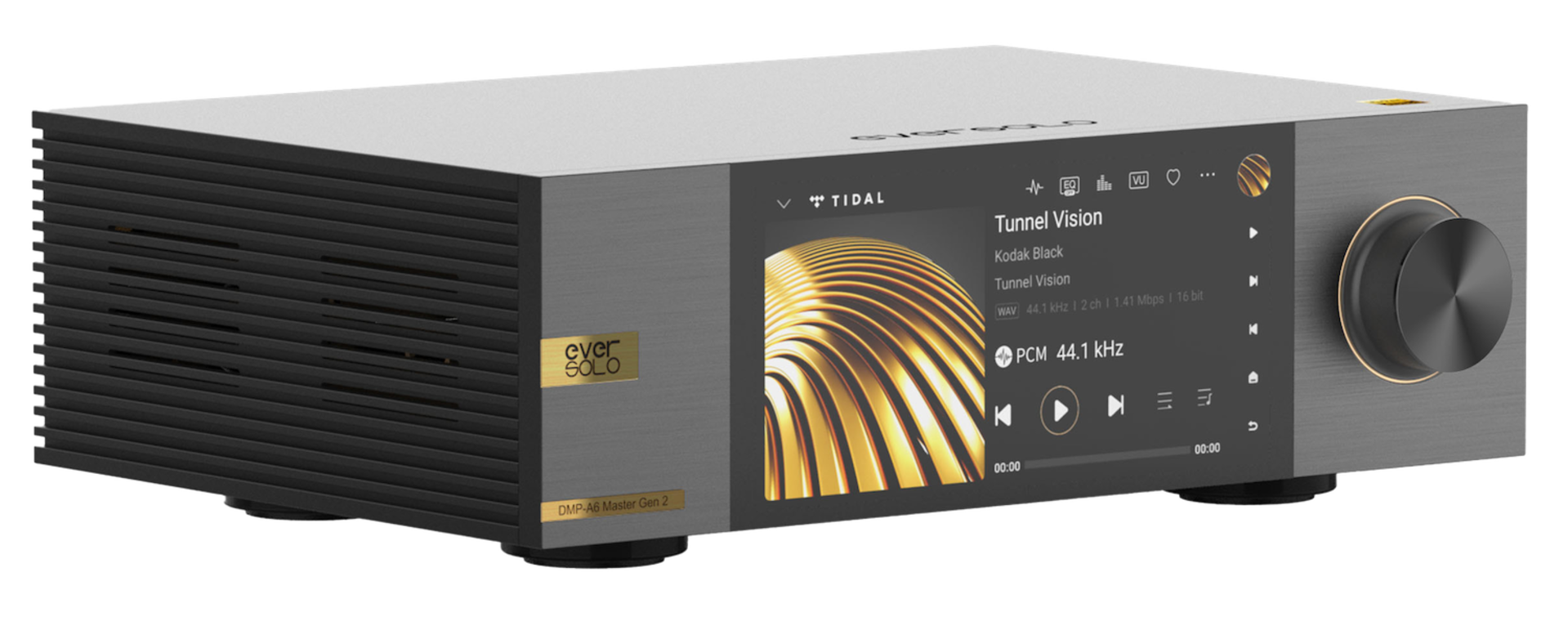
Bass:
The A6 Master Edition was significantly deeper than both the Ultra and the standard A6. The Master Edition substantially improved on sub-bass and midbass articulation and dynamics. We also no longer heard the bass somehow blend, but started to clearly differentiate between frequencies and harmonics. At first, we found it somewhat lacking in SPL or quantity compared to the A6, but after further listening, we realized the standard A6 had more quantity, while the Master Edition brought greater quality and layering. More articulation and precision if you will. With the Master Edition, bass lines became more visible, and notes were easier to follow. We felt a beginning of real mastery in control of the low end, showcasing a first step up in the lineup.
Midrange:
Voices started to breathe deeper; phrases unfolded with more naturalness. The sound was more transparent and added a noticeable improvement in the microdynamics department. Voices began to have trails, whispers were beginning to be revealed. The result was a midrange that was quiet in all the right ways, letting details shine without ever being pushed forward unnaturally. On test tracks with complex vocals, we could better notice the space between words, the gentle echo trailing in the background, thus better emphasizing the emotional message of the song.
Treble:
The Master Edition was softer on the ears than the A6. Less harsh. Less sibilant, a bit more refined, smoother, and more forgiving. Treble did not stand out as much, and if we paid attention, it had more texture and more inner detail. The sound was beginning to be a bit more delicate.
Layering:
We heard an improved lateral width and an opening of the stage. There was no longer a narrow, between the speakers presentation before us. We found the layering to be the highest difference between the A6 and the A6 Master Edition, with the latter starting to portray the silence between words layered so that the pauses became part of the performance, the echoes of voices were heard and felt, which added a lot to the emotional feeling. The background “silence” now held a sense of space, depth, and air.
Conclusion:
The A6 Master Edition outperformed the A6 in nearly every metric: bass, clarity and precision, soundstage, and dynamics. We honestly did not expect this much improvement from the A6, which by no means appeared as weak or entry-level. The Master Edition is a clear reference in its price range.
Eversolo DMP A8

Bass:
The A8 was more controlled and nuanced than the Master Edition. Sub-bass added more texture and detail. We found it to have a softer punch than the A6 Master, but more articulation and detail. More refinement. There was a real sense of speed and agility, with every bass note being easy to follow, but never overemphasized. On upright bass and kick drums, every strike was distinct, never smeared.
Midrange:
The midrange was lusher and more transparent. Tracks that emphasized midrange emotion, like jazz, opera & classical vocal, devotional, chill music now breathed. We found the A8 offered separation that felt natural and clean warmth. Emotion was now present within every genre of music and found it to be more involving, came to life a lot more easily. Vocals were effortless, flowing, the A8 reaching deeper into the lowest octaves, delivering a firm, powerful kick that also enriched the midrange with body and sweetness, qualities the A6 simply did not reveal. Acoustic instruments, especially strings, sounded rich, never thin or veiled. It was the kind of midrange that let us close our eyes and forget about the system.
Treble:
Treble became even smoother and completely fatigue-free. The sparkle started to show, and we started to hear sounds without paying attention to them. Sibilance was absent, and the presentation was relaxed and refined. Listening to challenging recordings became enjoyable, not tiring, and details emerged naturally without being pushed. The A8 rewarded us with clarity, but it was always easygoing, never aggressive, smooth.
Layering & Spatiality:
Layering and spatiality improved noticeably over the A6 Master Edition. Instruments took real positions; reverb tails were obvious. Stage depth and air were distinguished. We no longer had to pay attention to microdetails; they were presented effortlessly, and we found ourselves wondering if it could get even better than this! The soundstage was big, deep, and stable, with precise placement and room for every musical element.
Conclusion:
With the A8, we found ourselves living the “forget you’re listening to gear” moment. We just listened to music, and the equipment faded away. This was the first streamer in the test where, more than once, we left the playlist running, realizing we had stopped evaluating and simply started enjoying the music.
Eversolo DMP A10

Bass:
The A10 was tight, layered, and controlled. It used weight and depth with precision. Kick drums sounded like physical drums, literally moving air. Subbass was complementary and added to everything else without intruding or ruining anything. We heard layers upon layers that were previously hard to detect. The overall bass presentation was both authoritative and subtle, providing a more solid foundation for every track.
Midrange:
The midrange was a lot more expressive, realistic, and alive. Environmental cues, phrasing, and vocals started to carry weight, detail, and began feeling lifelike. There was always a sense of breath in the sound, of air, of movement, of presence. Acoustic guitars, pianos, and voices had a natural beauty that, sadly, we only get in the highest-end gear. It is very much true: if you want quality, you have to pay for it. We were surprised at how much emotional realism was now available, music was no longer just sound, it became a live performance.
Treble:
Treble was balanced, extended, and sparkly. It definitely added more sparkle and air. More texture and dynamics. With the added articulation, we found sounds that previously were muddied and without texture. High-frequency percussion finally had that elusive “air” that made the music open up, and nothing felt forced or artificial.
Layering and Soundstage:
Layering and soundstage became full, holographic, immersive. We were presented with depth front-to-back, separation side-to-side. We started to hear realism in sounds that had previously sounded somewhat dull. Echoes trailed off into the distance, and the sense of a room, of space and air, was so complete that we found ourselves transported out of the listening room and into the concert hall or studio.
Emotional Realism:
Emotional realism took on a new definition. Listening became immersive. We found ourselves transported with ease into the musical presentation, wanting to play more, wanting to play louder. The engagement was unreal and on a totally different level from all the other previously heard devices. We felt transported to another plane of musicality. We felt characteristics that only high-end DACs typically achieve.
Part II – Real Listening Impressions: Where Music Started to Matter
While charts and feature lists were helpful, real-world listening revealed the deeper story. We spent days listening to the Eversolo models. We went through all genres, testing everything from soft vocals to ambient tribal rhythms, punchy acoustic passages, to wide orchestral swells. Our focus was not just on what sounded different, but on what felt different.
The key discovery? The journey upwards through the Eversolo lineup was not just technical but emotional as well. With each step up the line, we found music not only became more transparent, but also more alive, more intimate, more meaningful, easier to listen to, fatigue started to fade away, the higher up we went. Let me just say that there is no comparison to be made between these devices and the Wiim Ultra as even the cheapest one, the A6 obliterates it. And with that note, we end this silly comparison and concentrate on what truly matters.
Let us now journey through some of the few tracks we listened to, pieces of music that opened the door for us to feel, and sometimes only gently uncover the differences between these beautiful toys.
1. “Across the Stars” – Eliott Tordo

(Emotional string, harmonic layers, orchestral sparkle, highlight track for emotional transmission)
The Wiim Ultra offered a smooth and somewhat musical presentation. The instrument sounded with an “in your face” effect. This track can be lush, but not here. We noticed some of the finer harmonic overtones were completely missing. Eliot Tordo plays the erhu, an instrument rich in harmonics, but on a weak system, it doesn’t sing, it just screeches. The overall sound was slightly veiled, more like enjoying a beautiful painting through frosted glass. It was there, but while paying attention to details, we always wished for more to be revealed. Also, a tad fatiguing.
The Eversolo A6 opened that frosted window. We immediately noticed more detail in the strings, and the erhu now had slightly more air around it. The performance became more engaging, starting to feel more delicate. We began to differentiate between notes and delicate passages. The entire presentation became more beautiful, more pleasant to listen to. Still, it remained slightly annoying at times.
With the A6 Master Edition, this track took on a new life. The space between notes was easier to feel, and the instrument no longer felt like it was floating above the music but was beginning to be part of the whole environment. There was more realism, more nuance, and a more cinematic presentation. The coherence between all frequencies was enhanced.
The A8 was where we started to lean back and listen. Everything started to feel in balance. The shimmer on top, the warmth in the strings, the perfectly balanced calmness and force in the dynamics. We were no longer analyzing the music. We were starting to experience it. Emotion began to surface here and there, quietly making its presence felt. Microdynamics that were previously missing now showed up, this being the highlight difference between the A8 and A6 Master Edition.
With the A10, air, breath, strings, and all sorts of sounds from a plethora of different instruments were finally in coherence; we felt like every subtle element was rendered effortlessly. What was previously a track, now become a performance. Granted, the A8 was nearly there, but not quite. The A10 managed to play with more feeling. Most importantly, the emotion transmitted here came effortlessly, and for the first time, we found ourselves getting goosebumps from the lifelike performance. No hint of fatigue or annoyance was present.
2. “Euphrates” – Govi

(Guitar texture, microdynamics, percussive decay, highlight track for testing the higher frequency of the spectrum)
With the Wiim Ultra, the gentle acoustic guitar in “Euphrates” sounded dull, occasionally pleasant, but lacking “life”. The articulation of the strings was slightly blurred. The rhythm was there, but we did not feel the fingers behind the music. We felt it was played more as a wave…. never stopping, rather than as individual strokes.
With the A6, we started to hear a little of what a true guitar sounds like. It definitely started to show more identity. We could hear the touch, the pluck, and more clearly defined tones. Drums sounded more separate and controlled. We felt the air between several instruments and layering became apparent: this was the highlight difference between the Wiim Ultra and the A6.
The A6 Master Edition took that foundation and added control. The rhythm became tighter, the guitar more intimate. We started hearing details we had not noticed before, like faint finger slides. Dynamics began to emerge, something missing from the standard A6, and we found ourselves engaged by the bass articulation and the coherence between all frequencies.
On the A8, the space between notes became part of the music. Decay trailed off naturally, and the background became a textured layer instead of just silence. There was elegance and pace, and the emotional intent behind each note started to pass through the system and into our hearts. We began to differentiate all the various instruments that were now thrown into a visible, almost lifelike soundstage: this being the highlight of the A8 compared to the A6 Master Edition.
The A10 delivered transparency with texture and flow. The instruments sounded relaxed but also dynamic when called upon, fully embodied but never aggressive. Dynamics was almost lifelike. The emotion arrived not with pressure, but with presence. It was not louder but deeper, more lifelike, more present, more physical. The sound was engaging and drew us in, making us want to move the volume up again and again without any trace of fatigue.
3. “Svanrand” – Heilung

(Tribal layers, deep bass combined with kick, vocal placement, highlight track for testing bass, dynamics, engagement, and soundstage)
Heilung’s ambient layering and primal percussion were a true test of depth and imaging. On the Wiim Ultra, things were a bit blended. We felt transported into a crowded environment where music was all around us. At times, especially when the track became busy, it was even annoying, as we could not raise the volume to feel the dynamics, and it definitely did not put us in the “battle trance” that this track is supposed to evoke.
The A6 immediately revealed more detail. We could follow different rhythms with ease, and vocals were now firmly placed in the soundstage, sounding much more engaging. The timbre was free from the coloration between 200–400 Hz that we heard on the Wiim Ultra. The soundstage became more three-dimensional, and we found ourselves immersed in the various layers in front of us. Dynamics made a brutal entrance: this was the highlight difference we observed on this track compared to the Wiim Ultra.
The A6 Master Edition added more space, and especially more contrast between sounds. Chants, drums, and textures started occupying their own roles. Voices became emotional, drums became more complex, and we noticed greater variation between different passages. Bass articulation was the most striking difference compared to the A6.
With the A8, the soundfield opened noticeably. Instruments and voices appeared at varying depths and distances. We began hearing background chants separated from the main voice, each placed at a distinct location in the soundstage. We had not noticed this before, even when paying close attention. Details emerged both front-to-back and left-to-right. We were presented with a palpable 3D soundstage that amazed us, this being the highlight difference between the A8 and A6.
On the A10, everything came together as one flowing narrative. Drums became physical, chants echoed across a deep, immersive space. We could even feel it due to the echoes that were played with such realism that we kind of felt transported there. Dynamics were over the top. So dramatic that we felt instant emotion, we felt the energy, we felt the impact. This track, in particular, made it clear: the A10 was a totally different beast than all the rest.
4. “Anoana” – Heilung

(Vocal dynamics, ambient energy, intimacy, highlight track for testing bass and microdynamics)
From the first moment, Anoana on the Wiim Ultra felt a bit rounded and a bit too linear. The energy was there, but, as with the details, it all stayed on a thin, flat surface. Still, we appreciated its warmth and ease of presentation. We got through the entire musical passage and found ourselves surprised by the pleasant presentation when listening at lower volumes (75-85 dB).
The A6 brought out transparency, especially in the layering and timbre of the vocals. Percussion hit harder, and the sound felt more focused. Bass became more impactful, mids were more enjoyable, this being the biggest difference between the more budget-friendly presentation from Wiim Ultra.
With the A6 Master, we noticed a step up in dynamic control. Voices started having clear, differentiated echoes, and the phrasing was better defined. Bass dynamics were also improved. Accuracy and articulation added to the already more dynamic presentation, showing us a much more engaging track, this being the highlight difference between the A6 and the Master Edition
On the A8, we started to feel somewhat immersed. Vocal tones grew in nuance, and the quiet parts became just as meaningful as the loud ones. The atmosphere of the track really changed and could now be felt. Harmonics previously hidden became noticeable. The highs were airier and more detailed, and we noticed a lack of the sibilance that the other smaller siblings sometimes delivered. Drums became more physical and much more engaging, thanks to the increased dynamics. Every sound started to be felt, and the whole presentation became a bit more emotional and natural.
The A10 took this even further. It presented not just the sounds but the silence between them. Every breath, every whisper, every pause had weight. Drums took on a physical role, and even if the sound pressure of the bass was the same, the feeling was now totally different. Because of the realism with which they were portrayed, we could feel them in the room with us; we could hear them coming from the very precise location on the soundstage that was created in the room, in front of us. Physicality was the highlight of the A10 when compared to the A8.
5. “Quality of Mercy” – Michelle Shocked
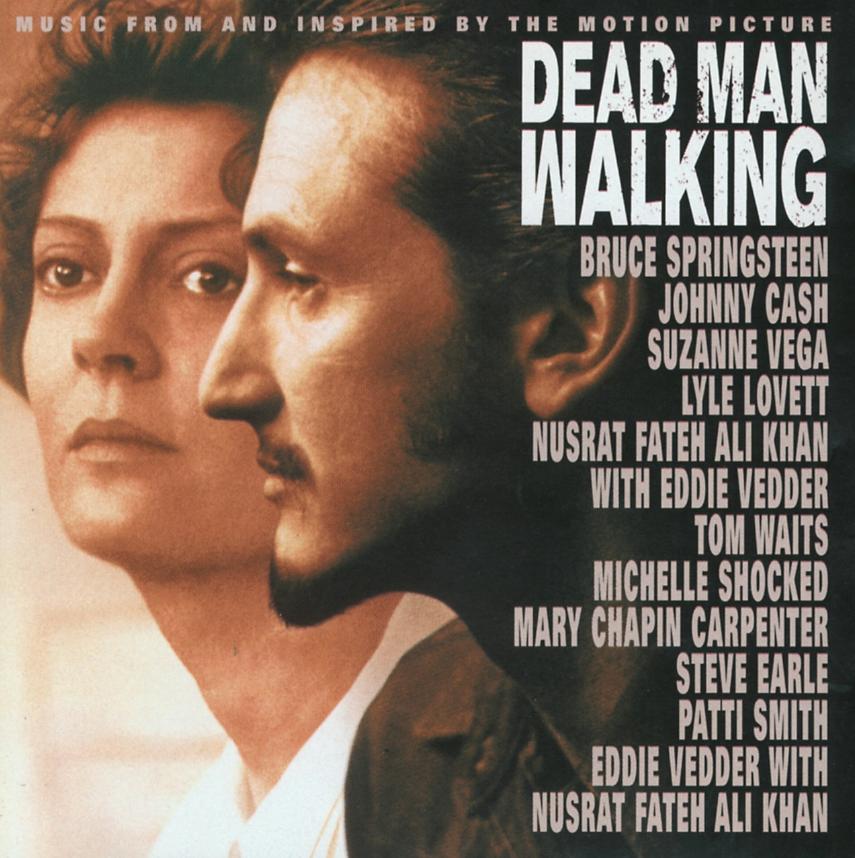
(Emotional realism, vocal intimacy, reverb trail, highlight track for testing mid timbre, dynamics, and kick bass)
This track was personal and heartfelt, and every device handled it with care. On the Wiim Ultra, the performance put the voice front and center, almost shouting at us. The soundstage was present, but confined within the inner boundaries of the speakers. We also heard a mild coloration in the midrange, making the voice slightly boxy. The listening experience was enjoyable and in no way fatiguing.
On the A6, the veil was lifted. The voice became a bit more humane, a bit more intimate. Timbre was correct without any deviation. Soundstage became more 3D with layering becoming apparent. The lower part of the spectrum was now showing itself clearly. The drum kicks were there, no doubt about it.
The Master Edition added realism and softness to each phrase, due in part to the increased dynamic range. Vocals became more nuanced and textured. Dynamics were improved heavily; we did not expect the difference to be so big, but it was. Highs were more textured and less harsh than the A6.
With the A8, we felt the atmosphere around the voice started to matter more and more. Thus, we started to feel a bit more emotion, along with the delivery of notes. Everything sounded more textured, more detailed. Dynamics improved to the point where the drums were starting to be felt, not only heard. We started clearly differentiating echoes and traces of various sounds, this refinement and microdynamics improvement being the highlight difference between the A8 and the A6 Master Edition.
And the A10? We just listened in silence. There was nothing left to analyze. It was not about resolution or depth anymore, but connection. Everything was intimate, but at the same time, on passages with extra dynamics, the drums had become physical. Take the intimacy of trailing voice echoes and the brutality of kick drums slamming your chest, add them into a perfectly blended package, and you could call it A10.
6. “Naturaleza” – Danit

(Vocal textures, acoustic layering, rhythmic subtlety; ideal for testing midrange emotion, layering, and spatial depth)
On the Wiim Ultra, “Naturaleza” felt flat. The vocals floated atop the mix but lacked intimacy; the breath and micro-expression in Danit’s voice were smoothed over. Acoustic guitar plucks and percussive taps blended together, leaving little separation between textures. The overall presentation was somewhat enjoyable at low volumes, but with dynamic contrasts and subtle microdetails being largely absent. The track became annoying to listen to in the end.
With the A6 vocals became more present, with much clearer articulation of breath, vibrato, and phrasing. Acoustic instruments started revealing their layers: the guitar’s pluck was distinct, and percussive elements had more definition. The midrange started showing warmth, and the timbre felt natural. The A6 showed emotion where the Wiim Ultra only suggested it, allowing subtle pauses and instrumental gestures to become audible, making the listening experience much more engaging.
Stepping up to the A6 Master Edition, “Naturaleza” revealed even more subtlety. Vocal microdynamics were more expressive, capturing the smallest inflections in Danit’s delivery. The midrange expanded, with timbre appearing more natural and intimate. Layering improved significantly, background instruments and harmonics now started occupying distinct space, and the silence between notes started to become meaningful.
On the A8, the track transformed further. The soundstage opened both laterally and in depth, placing Danit’s voice in a more realistic, lifelike space with air and echoes around her. Instrumental textures, from soft percussion to the guitar’s harmonics, were now clearly separated and easier to follow. The treble gained refinement, revealing delicate overtones and shimmer without some of the harshness we’ve heard before. Microdynamic variations were presented naturally, allowing crescendos and decays to flow more naturally. The A8 made it effortless to become immersed in the track, emotion and musicality were front and center.
With the A10, “Naturaleza” reached its emotional potential. Vocals were rendered with weight, presence, and lifelike detail; every whisper, breath, and vibrato had substance. The interplay between instruments became palpable, with layers clearly defined from front to back, left to right, creating a fully three-dimensional soundscape, even more so than before. Bass and midrange coexisted perfectly, giving both rhythm and body without overshadowing other areas. Emotional realism was breathtaking. The track no longer felt like a recording, but a performance happening in the room. Nuances previously hidden became easily recognizable, and listening felt immersive on a different emotional level.
7. “Blade Runner Blues” – Vangelis
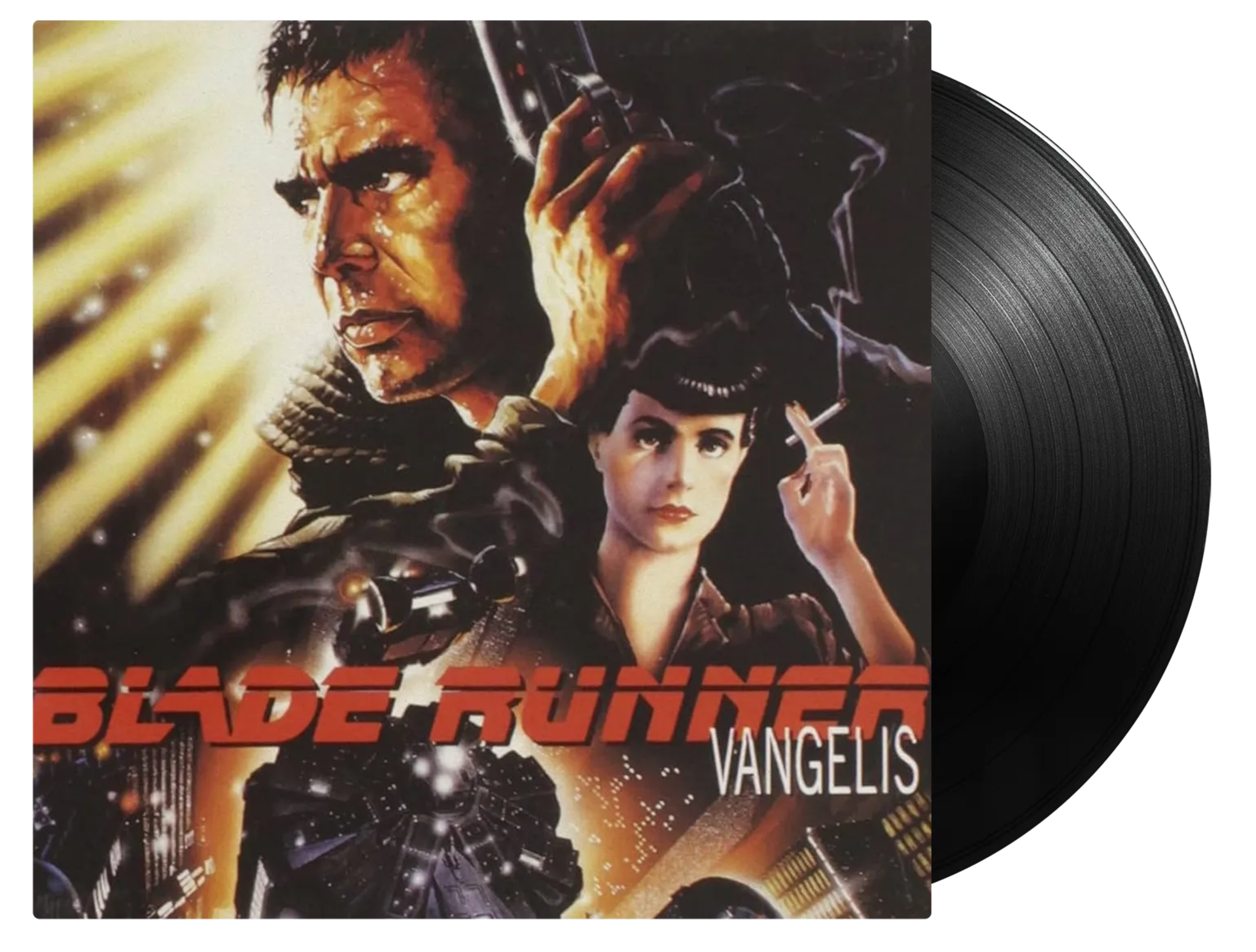
(Ambient textures, ethereal vocals, synth layering; ideal for testing atmosphere, midrange timbre, and layering depth)
We felt “Blade Runner Blues” lacked depth and dimensionality on the Wiim Ultra. The synth layers felt compressed, and the low frequencies were shallow, offering little impact. The melancholic atmosphere was hinted at, but the system failed to convey the haunting, immersive quality of the track. Layering was minimal, with harmonics blending together rather than floating in space. Emotional expression was subdued, leaving the track feeling somewhat distant.
With the A6, the track gained significant depth and presence. Weight and articulation gave the synths a fuller, more grounded foundation. Midrange tones, including the ethereal synth leads, emerged with a hint of warmth. Layering improved, allowing each harmonic to occupy its own space. The haunting, cinematic atmosphere began to take shape, but even so, we felt the emotional undertones of the track had not yet become apparent.
The A6 Master Edition elevated the track even further. Microdynamics became more expressive, and the subtle variations in the synth textures and pad decays were now clearly audible. Layering reached a new level. The track’s melancholic and cinematic mood came through with enhanced realism, and the pauses between synth phrases felt meaningful. Emotional immersion was now a bit tangible, dare we say. It wanted to draw us deeper into Vangelis’ world.
On the A8, the experience became cinematic. The low-end sub-bass extended with precision and texture, adding a palpable sense of weight. The midrange carried the emotional content of the track naturally, making the synth leads sound expressive. Layering and spatiality expanded, with instruments and harmonics clearly delineated across a broader soundstage. Due to the improved dynamics and more refined highs, we felt the A8 conveyed the track’s atmosphere effortlessly, making it immersive without any fatigue or harshness, every harmonic nuance revealing itself naturally.
With the A10, we felt the track reached part of the emotional fidelity we were searching for on the journey to discovering Vangelis. The low frequencies were tight, textured, and authoritative, providing a solid yet unobtrusive foundation. Midrange and synth harmonics were rendered with astonishing clarity and presence, capturing every subtlety. Layering was flawless, and the soundstage offered an enveloping three-dimensional space, bringing cinematic depth to the next level. The highs were sparkling throughout the room, thus, we began to really understand the emotion behind the song: melancholy, tension, and beauty combined effortlessly. Like tears in the rain, we found ourselves immersed completely in the experience. We also felt the artistic spirit has been summoned allowing us to write about that experience with more emotion than before, when thinking about it.
The A10 gave us the opportunity to listen and live in quiet contemplation for the whole album… Beautiful!
8. “Agape” – Dead can Dance
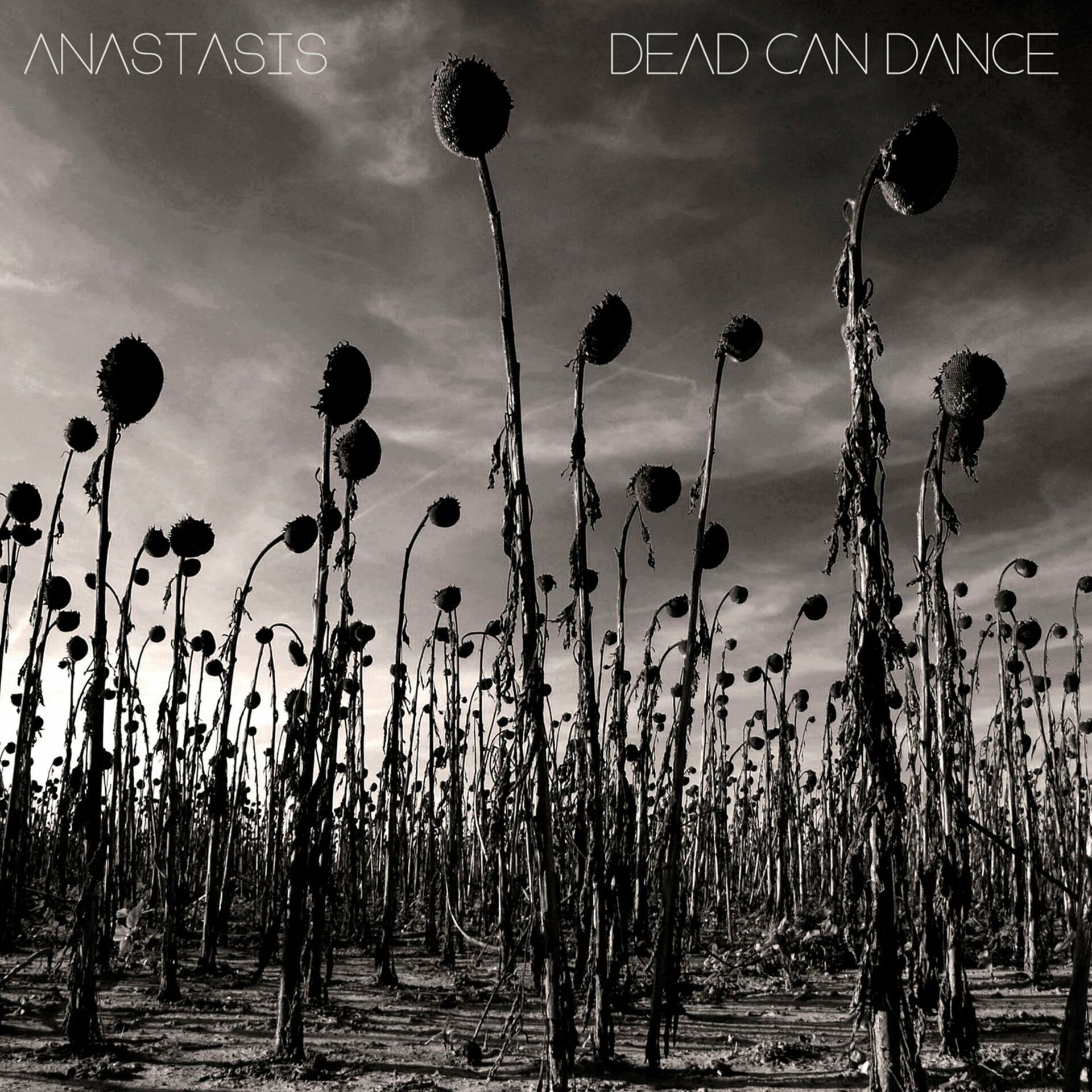
(Ritualistic percussion, atmospheric strings and synths; ideal for testing layering, spatial depth, vocal timbre, and emotional intensity)
On the Wiim Ultra, Agape is presented clearly enough to follow, but felt like a sketch, rather than a painting. Lisa Gerrard’s voice sounded slightly veiled, with limited separation from the instruments. Percussion felt congested, and the reverb tails that create the mystical atmosphere we simply not there. The soundstage was narrow, with layering almost absent. Emotional impact was lacking, what should feel sacred and expansive instead came across as restrained and annoying.
With the A6, the track came to life with greater clarity and depth. Lisa Gerrard’s voice emerged more naturally, with her distinct tonal richness intact. Percussion had more weight and definition, and atmospheric synth layers began to unfold. The track felt more immersive, with better placement of instruments and voices in the soundstage. We even heard a hint of emotional engagement, but….it faded, as the highs were not refined enough and here and there we could hear traces of sibilance.
On the Master Edition, subtle refinements took the performance closer to our hearts. Microdynamics allowed Gerrard’s voice to rise and fall with expressive nuance. Percussion became more articulate, with greater resonance and captured decay. The soundstage opened wider, with instruments and voices starting to occupy distinct spaces, no longer congested. Silence between notes started to become meaningful, emphasizing tension and release. Emotional connection began to unfold; it now felt more like being inside the recording space.
The A8 transformed “Agape” into an almost ethereal experience. Lisa Gerrard’s voice soared. The instruments started to weave naturally into their own spaces with flowing entrances and exits. Percussion strikes landed with depth and texture, their reverberations almost floating into the soundstage, all while maintaining precision. Harmonic layering was rich, and the overall presentation was more immersive and fluid. Emotion flowed effortlessly, with the track’s sacred and meditative atmosphere finally being conveyed.
On the A10, vocals felt lifelike, more intimate, and beautifully textured. Lisa Gerrard’s haunting tones emerged from a central focal point, clearly distinguished from the instruments and even from the echoes, creating a striking sense of presence and separation. Percussion had a more visceral impact, with sub-bass extension and delicate decay being beautifully balanced throughout the song. Atmospheric textures and reverb tails extended naturally into the stage and in front of us. Dare we say layering was flawless, microdynamics revealing every subtle change. Emotional realism was beautifully conveyed. The track became an immersive spiritual experience.
The A10 brought a sense of beauty, grace, and pleasure into the act of listening. Every track felt far more enjoyable, this added refinement being what most of us look for when searching for the ultimate system.
9. “You Look Good to Me” – Oscar Peterson Trio
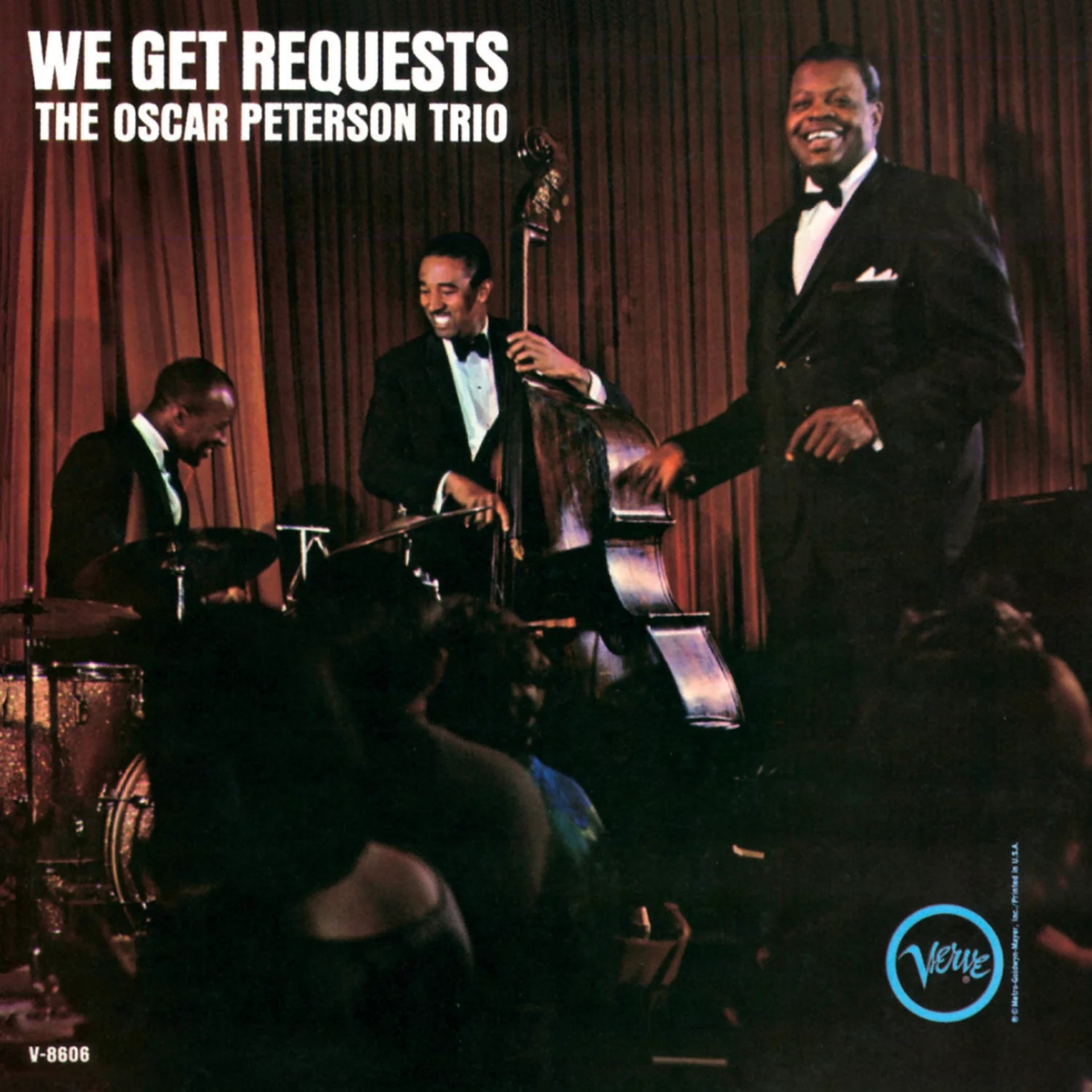
(Piano by Oscar Peterson, bass by Ray Brown, drums by Ed Thigpen; enough said)
The Wiim Ultra tried to deliver a smooth, approachable presentation of this classic jazz trio. We heard the piano come across as pleasant but somewhat flattened, lacking the subtle attack of Peterson’s fingers on the keys and sounding rather veiled. Bass lines were audible but lacked depth and articulation; the double bass felt more like a supporting hum than a rhythmic, melodic vibration. The drums were present, but the stick attacks were not crisply defined, and cymbals missed any trace of shimmer or air. The track sounded like instruments making sounds, not a live interaction.
With the A6, the track began to breathe slightly. We heard piano notes gain a more natural decay, though still lacking full dynamics. Each key strike was now showing a trace of tonal variation. Bass gained weight and more articulation, with each pluck becoming more discernible. Drums acquired impact and definition. The hi-hat’s rhythm was easier to follow. The soundstage widened, placing instruments more distinctly in space. Microdynamics improved, allowing softer passages and piano runs to convey more intimacy. Overall, the A6 started to reveal the musical conversation, moving beyond mere sounds.
The Master Edition elevated the presentation further. The piano gained tonal richness and harmonic depth. Overtones of the bass and cymbals became more tangible. Layering improved: we began to sense small spaces between instruments. Microdynamics added subtle ghost notes. Emotional realism strengthened. The A6 Master Edition made the music sound more emotional and more engaging.
The A8 added immersion. Piano, bass, and drums now occupied distinct, well-defined positions within a precise soundstage. The resonance of the piano and subtle overtones of the bass now had body and shimmer, while cymbals possessed sparkle and natural decay, previously absent. Layering was exceptional: the interplay between instruments was now clear. Microdynamics and textural details like the brush on the snare, the pedal shifts on the piano, were fully present. Emotional realism was heightened we believe, in part due to the increased sense of space and natural silence between instruments and notes: we could feel the joy, swing, and intimacy.
The A10 delivered the most lifelike rendition of the performance. Piano strikes carried more physical weight and articulation. Bass lines had authority, resonance, and definition; drums were dynamic and precise, and cymbals shimmered with sparkle and natural decay. Layering and spatiality reached a higher level as each instrument now had its own depth and width, creating a 3D stage that immersed us completely. Microdynamics were extraordinary, the quietest runs were audible, and the dynamics of the trio’s interplay felt palpable. Emotional realism reached a totally new level. We truly found pleasure in listening to the A10.
10. “Hotel California” – Eagles
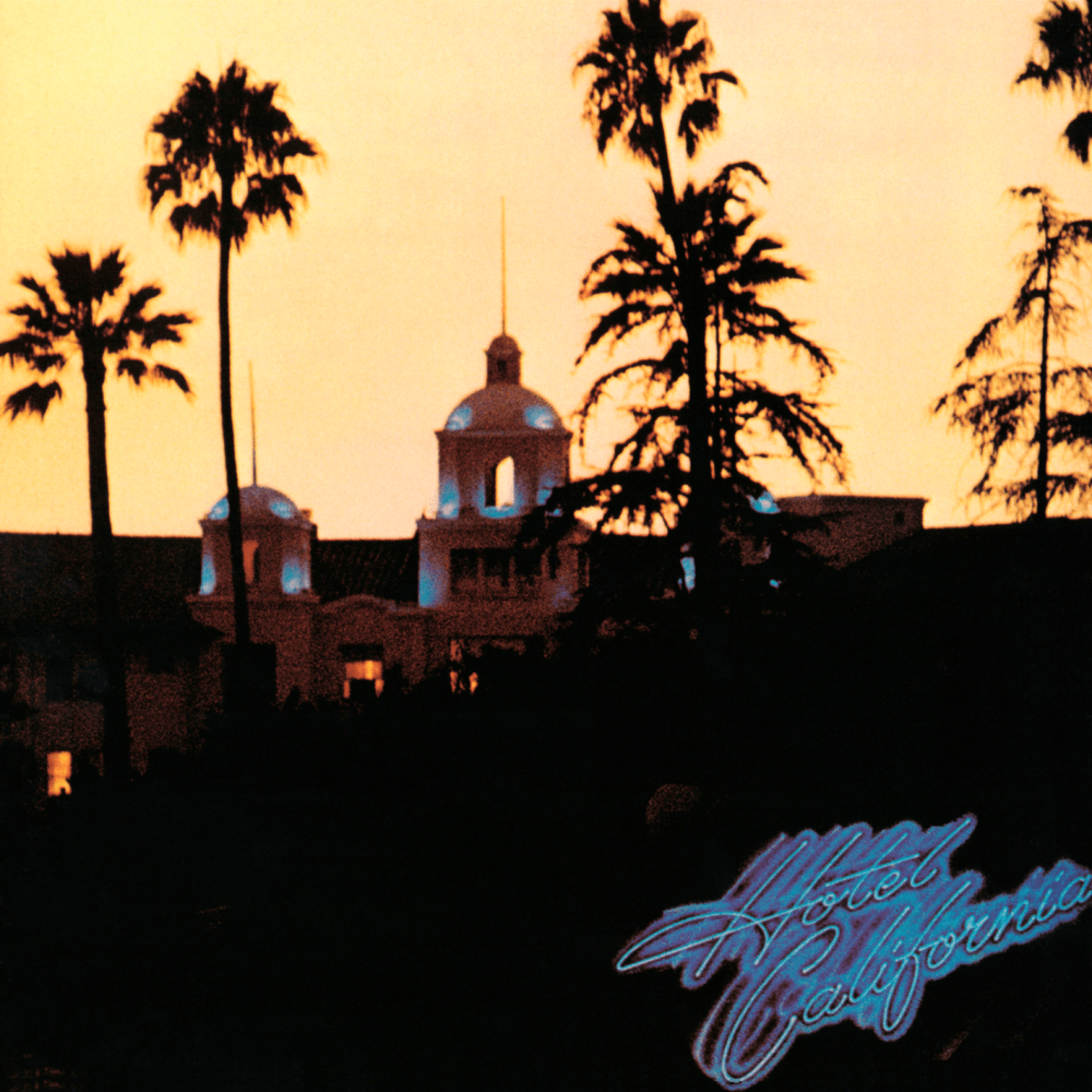
On the Wiim Ultra, “Hotel California” sounded approachable, with vocals sitting comfortably in the mix and all the main elements present. The separation between instruments was moderate; guitars, bass, and drums blended smoothly but sometimes lacked the vivid distinction of a live performance. Cymbals had a hint of shimmer, though at times they could feel a bit soft and slightly sibilant. The overall impression was pleasant and easy to listen to, if not especially immersive.
With the A6, the track began to breathe. Vocals gained texture and depth, guitars stood apart with clearer phrasing, and the iconic arpeggios became more defined. Bass lines gained weight, giving the rhythm section more authority, and the drums revealed extra nuance. Layering improved, letting us follow each instrument more distinctly in space, and emotional realism began to shine through, making the music more engaging.
The A6 Master Edition refined the performance further. Vocals floated naturally at center stage, details increased, and the interplay between lead and rhythm guitars was more apparent. Bass became more precise, drums more dynamic, and layering and microdynamics reached another level this being the highlight difference between the A6 and the A6 Master Edition
With the A8, “Hotel California” reached a new level. Vocals sounded rich and alive, guitars had more body, and every detail, each pluck, strum, or drum hit was more articulate and more detailed. The soundstage expanded well beyond the speakers, with instruments occupying clear, three-dimensional positions. Microdynamics were improved, and emotional impact deepened, making us feel more in tune with the song.
The A10 elevated everything. Vocals were lifelike and expressive, full of emotion and harmonics. Guitars extended with clarity and more refinement, and the interplay between instruments was vivid and nuanced, better distinguished with spaces between sounds now being better emphasized. Sub-bass was more physical which added to the already more emotional touch. The soundstage became a very well defined three-dimensional space, in which every instrument could be distinctly placed. The A10 conveyed more realism and spatial awareness than any other contender.
Final Verdict
When the DMP-A6 Gen 2 launched, it clearly raised the bar in every way, at its price range, being something never before seen. It has helped us customers immensely and the evolution of the hi-fi industry as a whole. We believe the DMP-A6 Gen 2 deserves to be recognized as the king of budget-friendly streamers in its price range. It raises the bar in every way, built with quality and sonic refinement in mind. We found it to be fast, fluid, musical, honest, and remarkably free from coloration. At an affordable price point, it gives budget-conscious listeners an excellent foundation on which to build a serious system.
The DMP-A6 Master Edition added more depth and blacker backgrounds. Everything sounded more refined and detailed with added engagement, emotion and feel to every musical piece. What truly stood out, however, was the sense of calm and composure the Master Edition brought to the table.
Transients were sharper, but never aggressive, and the sense of space between notes was more pronounced, giving every track a deeper, more immersive quality.
The DMP-A8 was where the hint of high-end began to be felt: highs became less sibilant, with more sparkle up top, more detail and less fatigue. The midrange had a lusher, more organic presentation. Dynamics and microdynamics were on a different level. The sense of air, space, and scale was unmistakably different; the soundstage expanded, both in width and depth, revealing an abundance of subtle spatial cues and micro-details that were previously masked or compressed. Perhaps most telling was the sense of ease with which the DMP-A8 resolved complexity. On dense recordings, it separated layers and voices gracefully, allowing us to follow each instrument or line of melody without effort. We feel the DMP-A8 is the first real stepping stone into the world of high-end sound.
Finally, the DMP-A10 was a statement piece in every detail, inside and out, engineered for the most demanding individual. It improves on all aspects on the entire spectrum, adding emotion on top of realism. The DMP-A10 distinguished itself not just with raw performance, but with an sense of flow… with a natural, unforced ease, allowing music to become more than just a collection of notes. Music became an experience, emotional and daring.
Layering and spatial cues reached new levels; when listening on the DMP-A10, we found ourselves surrounded by a three-dimensional soundstage that pulled us deep into every recording.
Whether it was the weight and definition of the low end, the textural beauty of the midrange, or the sparkling, fatigue-free highs, the DMP-A10 delivered it all with composure and confidence.
It brought a sense of presence to every performance, somewhat erasing the boundaries between system and listener.
The emotional realism was so compelling, there were moments when we simply forgot about gear altogether.
As much as we tried, we could not find any real fault with it.
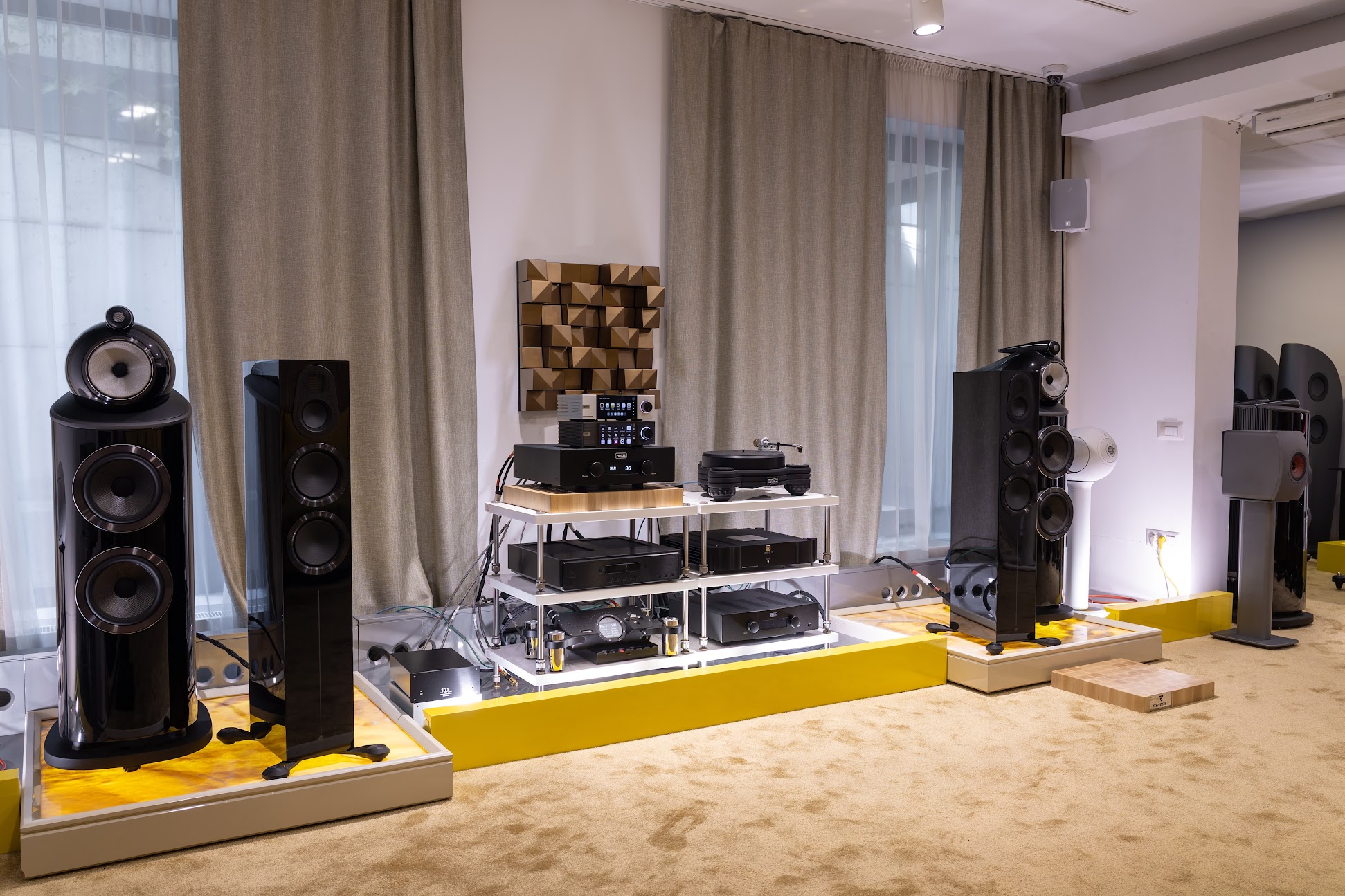
You can clearly see the pattern:
With the entry-level devices, music is presented in a straightforward, accessible way, easy to enjoy, though sometimes a bit simplified and less nuanced. As you move up the line, those musical elements begin to connect more naturally, building greater structure and coherence. With the higher models, the music starts to breathe; notes and textures gain depth, and the presentation feels more open and dimensional. At the very top, everything comes together, not just as a technically accomplished sound, but as true music: vibrant, immersive, and capable of sparking the emotion that makes listening so rewarding.
Depending on our needs and preferences, we found that each step up the Eversolo streamer ladder brought:
• More air. More depth.
• More contrast. More detail.
• More life. More emotion.
• More music.
Closing Thoughts
We wanted to write something that we ourselves would have liked to have read. While writing, we tried to shape this review as a story of discovery, a story of songs, moments, and honest amazement. We went in with an open mind, like a child discovering a brand new toy. Our hope is that, by the end, you, the reader, will have a much clearer idea of what Eversolo has to offer, and maybe feel a little more confident when the time comes to choose the device that fits you best.
Before closing, we want to thank AVstore, the Eversolo distributor in Romania, for making this comparison possible. They gave us all the time and freedom we needed, never asking for a rushed review, never steering us in any direction, and never trying to influence the outcome. This kind of openness and trust is rare, and it allowed us to spend as much time as needed, listen carefully, and share only what we honestly heard.
So, thank you, AVstore. And thank you to everyone who reads, listens, and keeps searching for that next song or system that can surprise you. That, in the end, is what keeps us coming back.
Written by the Hurba Brothers, as two open-minded listeners, each session carefully compared and discussed, every finding and impression forged from many hours of genuine, passionate intake of music, sound and emotion.

